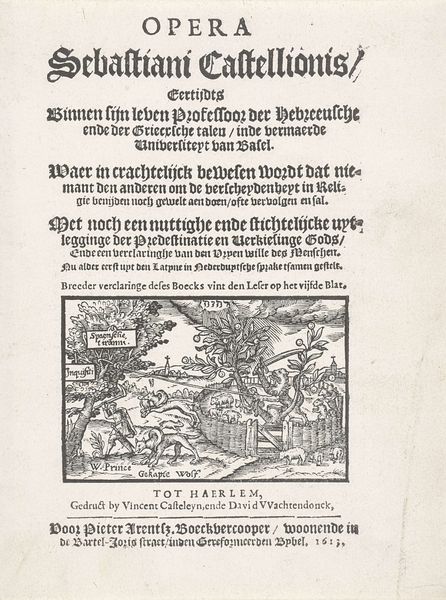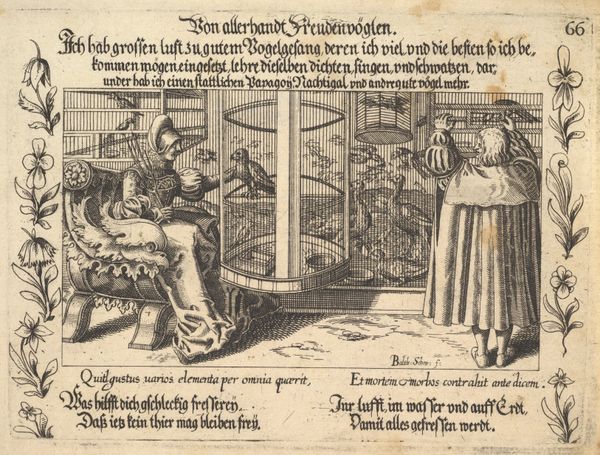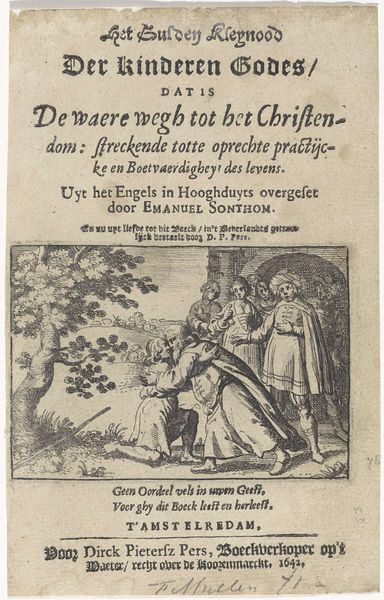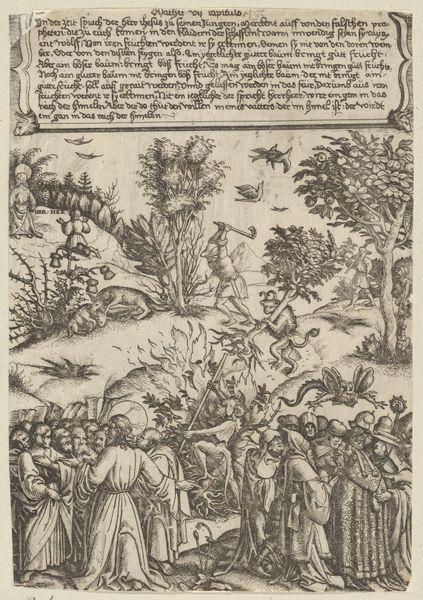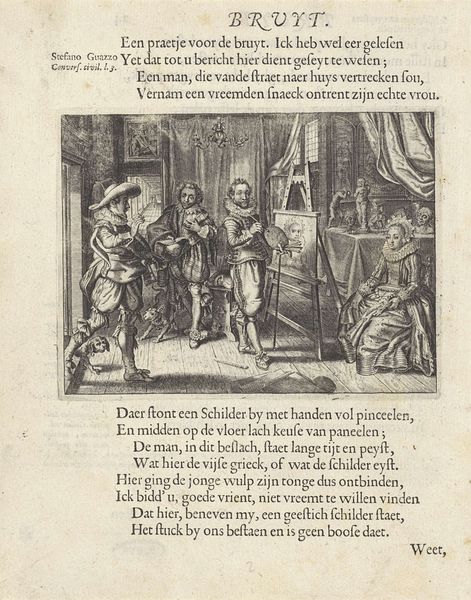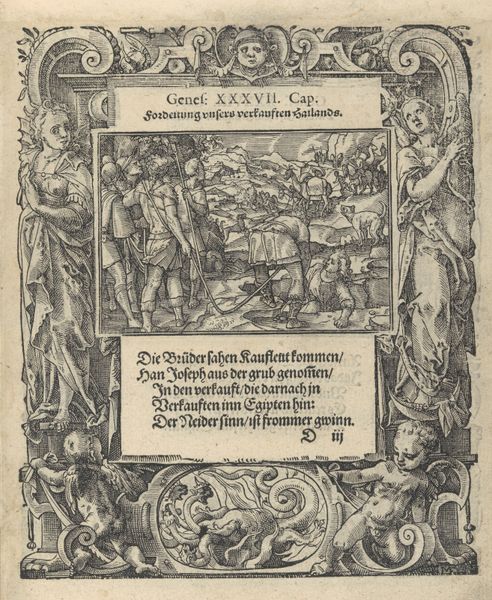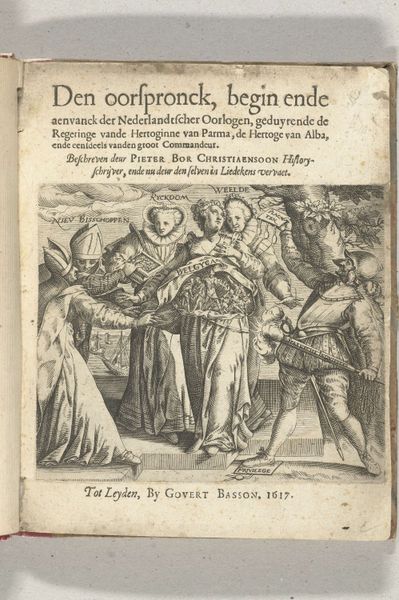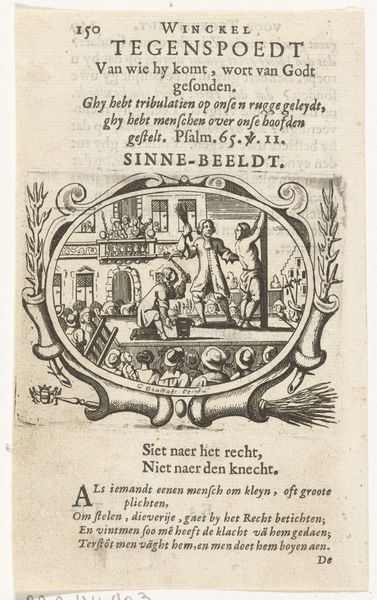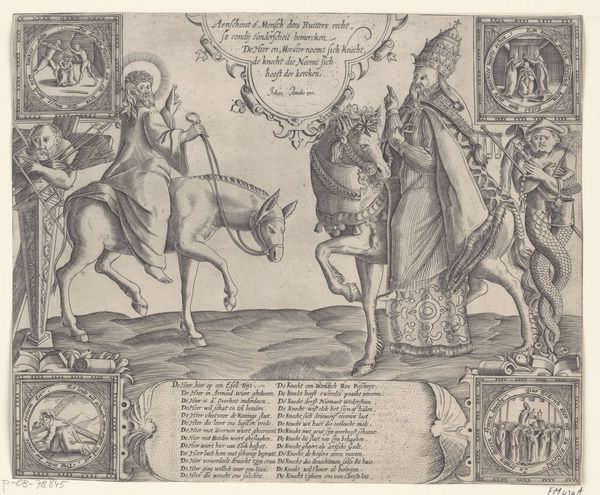
Von sorglichkeit ansächtung, schwere und mühsamkeit der Tugent, so vornemlich in der Demut betehet, illustration from Petrarch, Glück und Unglück Spiegel, figure 12 1652
0:00
0:00
drawing, print, engraving
#
drawing
#
baroque
#
pen drawing
# print
#
history-painting
#
engraving
Dimensions: sheet: 5 1/2 x 7 1/16 in. (14 x 18 cm) plate: 4 1/2 x 5 7/8 in. (11.5 x 15 cm)
Copyright: Public Domain
Editor: Okay, so this is "Von sorglichkeit ansächttung, schwere und mühsamkeit der Tugent, so vornemlich in der Demut betehet, illustration from Petrarch, Glück und Unglück Spiegel, figure 12" by Balthasar Schwan, from 1652. It's an engraving. There's something about the figure’s stooped posture and the dense forest that feels so… weighty, you know? Almost oppressive. What do you make of this piece? Curator: Well, seen through a historical lens, that feeling of oppression could be quite deliberate. This illustration, like many of its time, participated in a larger project: the construction of social and moral order. The emphasis on humility and the "burden" of virtue – that's not just a personal sentiment, but a reinforcement of hierarchical structures. Who do you think benefited from such representations of virtue? Editor: So, you're saying it's less about genuine virtue and more about… social control? It does seem like the figure is weighed down, almost like the image itself is meant to weigh the viewer down, imposing on them. Curator: Precisely. Think about the book it’s from: a mirror reflecting fortune and misfortune. It implies that enduring hardship through virtuous behaviour leads to a reward, subtly justifying existing power dynamics. It suggests a divinely ordained system. What do you think about the ways the print medium contributed to this message? Editor: That's fascinating. The accessibility of prints would mean that these ideas could spread widely. So, an artwork becomes a tool to… shape public opinion. I never really thought about how prints could solidify certain socio-political views. Curator: Exactly. The visual language becomes intertwined with the political and social climate. So, when we analyze art like this, we’re not just appreciating aesthetics; we're unpacking cultural values, revealing what those in power wanted people to believe. Editor: This has completely changed how I see this image. It's more than just an illustration; it's a reflection of its time, perpetuating specific ideologies. I will now consider context of works and look at power dynamics that exist in them. Curator: I’m glad to hear it. Analyzing visual art from this perspective lets us unravel hidden histories, and challenges us to see art not as isolated objects but as participants in larger socio-political conversations.
Comments
No comments
Be the first to comment and join the conversation on the ultimate creative platform.
